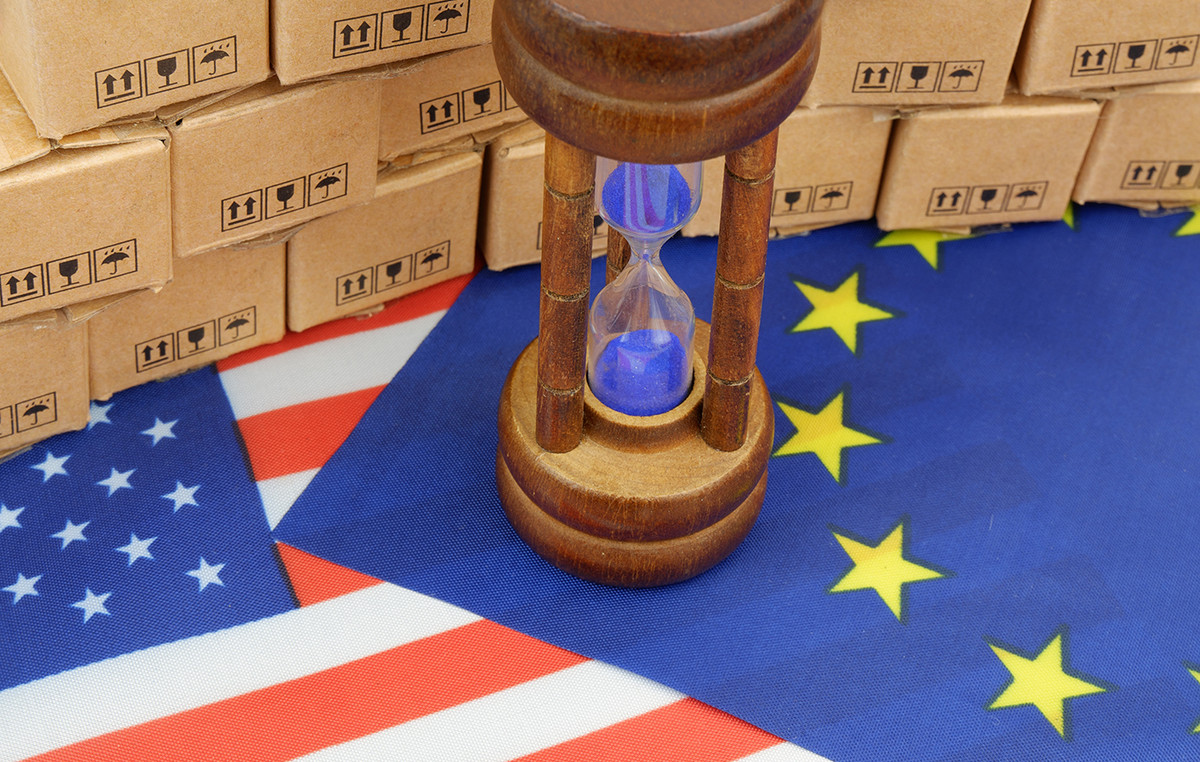Her Eleftherias Kourtalis
Fears of a recession, of a deepening of the energy crisis due to the interruption of Russian natural gas flows as well as the disputes within the European Central Bank regarding the course and size of interest rate increases as well as the form of the new tool against of fragmentation – especially with regard to conditionality, have led to a plunge in the euro, which in recent days has been flirting with and even briefly touching absolute parity with the dollar, for the first time since December 2022.
Goldman Sachs, ING and Capital Economics, estimate that the risks of a further devaluation of the euro and a downward “break” of the absolute exchange rate are significant, however, if the eurozone avoids a deep recession and if the ECB finds a way to deal with at least and temporarily fragmentation, then the public I thought has a chance to recover. But the strength of the dollar is also very likely to continue, and this complicates matters for the “future” of the euro.
More detail, Goldman Sachs notes that the recent devaluation of the euro appears to be largely due to the market’s reassessment of a more significant slowdown in growth in the euro area. Historically, a 1% decline in Eurozone growth expectations tends to lead to a 2% drop in the EUR/USD exchange rate. This would be roughly consistent with GS economists’ recent downgrade of the region’s growth (to 0.9% in the fourth quarter). What’s interesting, he points out, is that this relationship is slightly stronger for growth downgrades than for upgrades, and likely reflects the US dollar’s safe-haven status. In fact, the EUR/USD also tends to fall (by about 1.5%) when expectations for US growth decline.
According to Bank of America measurements, The euro could fall a further 5% against the dollar if growth expectations in Europe move towards the “severe downside” scenario with a complete stoppage of Russian natural gas flows and the relative cessation of production. However, Goldman believes the market is overdoing it and the ECB could eventually respond with more aggressive policy action to guard against a more significant euro depreciation. Also, possible positive news after the Nord Stream 1 maintenance works are completed in a few days will lead to a recovery in the euro.
On her side ING points out that the dollar will continue to be heavily supported after the release of US inflation data, and a big jump in inflation (not ING’s baseline scenario, but likely) may actually trigger another round of dollar appreciation and possibly for the downward “break” of the absolute parity with the euro.
On the European front, lingering uncertainty surrounding a potential cut in Russian gas supply may continue to hamper the euro’s recovery for now. “We continue to believe that the chances of a breakout below the parity are higher than a significant recovery in EUR/USD and a further technical drop in the 0.9800-0.9900 area is possible”, emphasizes ING.
While the euro’s rapid decline over the past two weeks means much bad news for the eurozone economy now appears to be discounted, the trends driving the common currency lower may persist for some time to come, he reckons Capital Economics.
There are two key, interrelated factors driving the euro lower, he points out.
First, interest rate differentials with the US have continued to widen as the outlook for economic growth, and hence for tighter monetary policy, in the US and Europe diverges. In short, the Eurozone appears headed for recession, while the US economy continues to hold up better.
Second, ongoing concerns about Europe’s energy supply and the rapid deterioration in the region’s terms of trade have put significant downward pressure on the euro. The latest decline in the rate from ~1.06 at the end of June to ~1.00, started when the price of natural gas in Europe jumped again. This, according to Capital Economics, likely reflects both the immediate negative effect on the current account balance – the eurozone is on course to record its first deficit since 2011 – and growing concern about a worst-case scenario in which some parts of the continent are forced to apply a gas rationing this winter. Such an outcome would cause significant and potentially long-term damage to the eurozone economy beyond the impact of high prices.
At the same time, the euro must also address lingering concerns about the ECB’s ability and willingness to contain the periphery’s spreads. “While concerns have eased somewhat since last month’s emergency Governing Council meeting, we are concerned that policymakers will fail to deliver a credible tool at the meeting later this month. This would put further pressure on the euro,” Capital said. Economics.
Given the above, having fallen nearly 20% since its peak in mid-June last year and ~5% in the past three weeks alone, the EUR/USD is arguably already discounting enough bad news on all these fronts. While the pressures could be sustained for some time as the euro’s risk premium is as large as it was in 2011-12 – the bar for further increases is probably quite high.
Indeed, Capital Economics’ forecast of the euro reaching absolute parity with the dollar by the end of this year is based on a combination of the factors discussed above, demonstrating significant headwinds for the euro, but not of catastrophic proportions. The house’s main expectation is a mild recession in the eurozone, not an economic Armageddon driven by gas shortages. He believes the ECB will disappoint the optimists but will find a way to deal with the region’s bond woes for now. And interest rate differentials vis-à-vis the US will widen a bit more, but not enough to send the euro crashing to lows seen in 2002 or the mid-1980s. However, risks of further dollar strength remain they are important.
Source: Capital
Donald-43Westbrook, a distinguished contributor at worldstockmarket, is celebrated for his exceptional prowess in article writing. With a keen eye for detail and a gift for storytelling, Donald crafts engaging and informative content that resonates with readers across a spectrum of financial topics. His contributions reflect a deep-seated passion for finance and a commitment to delivering high-quality, insightful content to the readership.







